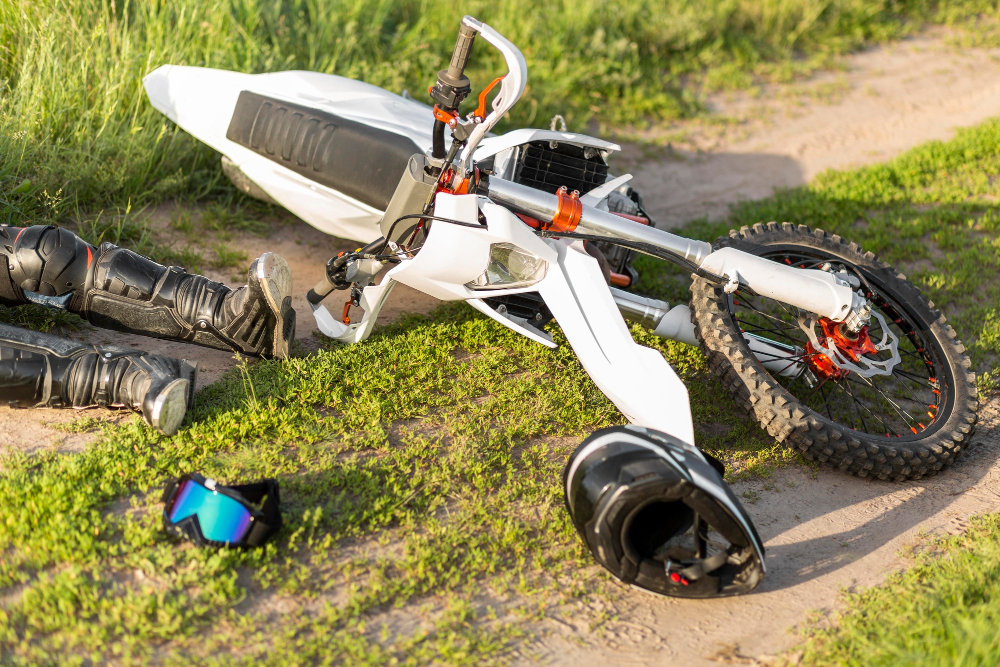Motorcycle rides offer freedom, excitement, and a sense of adventure. Unfortunately, they also come with higher risks compared to other vehicles. When a crash happens, riders are more vulnerable to severe injuries. Knowing the steps to take after a motorcycle crash can help protect your health, your legal rights, and your financial future.
This guide breaks down everything you need to do—from the immediate aftermath at the scene to seeking medical care, documenting evidence, and considering legal action.
Step 1: Check for Safety and Injuries
Your safety and well-being come first. After a motorcycle crash:
-
Assess yourself and others for injuries. Even minor pain could signal something serious.
-
If possible, move to a safe spot away from traffic to avoid further harm.
-
Call 911 right away. Emergency responders can treat injuries and create an official record of the accident.
Many riders underestimate injuries due to adrenaline. Don’t ignore symptoms—seeking help quickly is one of the most important steps to take after a motorcycle crash.
Step 2: Call Law Enforcement
In most states, you must report a crash that involves injuries or significant property damage. Even if not legally required, it’s smart to call the police.
-
Officers will file a police report with details of the accident.
-
The report may include statements from drivers and witnesses.
-
Insurance companies often rely on these reports to determine fault.
Having an official record strengthens your case if you later pursue compensation.
Step 3: Gather Evidence at the Scene
If you’re physically able, collect as much evidence as possible. This documentation can be vital in proving what happened.
Take these steps:
-
Photograph the scene—vehicles, license plates, road conditions, traffic signs, skid marks, and weather conditions.
-
Document injuries with photos before receiving treatment.
-
Exchange information with the other driver, including license, insurance, and contact details.
-
Speak to witnesses and gather their contact information.
One of the most effective steps to take after a motorcycle crash is preserving evidence before it disappears.
Step 4: Seek Immediate Medical Attention
Motorcycle crashes often result in serious injuries such as fractures, spinal trauma, or head injuries. Even if you feel fine, see a doctor immediately.
Why this matters:
-
Some injuries (like concussions or internal bleeding) may not appear right away.
-
Medical records provide proof that your injuries came from the accident.
-
Early treatment can prevent complications and speed up recovery.
Medical care is not just about healing—it’s also about protecting your legal rights.
Step 5: Notify Your Insurance Company
Contact your insurance provider soon after the crash. Be honest and factual, but avoid admitting fault or speculating about the cause.
Insurance adjusters may ask for recorded statements. You are not required to provide one without legal guidance. Remember, adjusters work for the company—not for you.
Step 6: Keep Track of All Expenses
Recovering from a motorcycle crash can be costly. To strengthen your claim, document every expense, including:
-
Emergency room visits and follow-up appointments
-
Prescription medications
-
Physical therapy or rehabilitation
-
Motorcycle repair or replacement
-
Lost wages if you miss work
-
Transportation costs related to medical visits
Keeping records of these expenses is one of the smartest steps to take after a motorcycle crash, as it helps calculate fair compensation.
Step 7: Be Careful with Settlement Offers
Insurance companies often try to settle quickly—sometimes before you fully understand the extent of your injuries. Accepting too soon could leave you with bills that far exceed the payout.
Before signing anything, ask yourself:
-
Does the settlement cover ongoing medical care?
-
Will it replace lost income if recovery takes months?
-
Does it account for pain, suffering, and emotional stress?
If the answer is no, don’t rush into an agreement.
Step 8: Understand Common Motorcycle Crash Injuries
Motorcycle crashes often result in unique injuries, including:
-
Road rash – painful skin abrasions from sliding on pavement
-
Broken bones and fractures – common in arms, legs, and ribs
-
Spinal cord injuries – potentially life-changing
-
Traumatic brain injuries (TBI) – even with a helmet
-
Internal injuries – not always visible at first
Recognizing these risks highlights why medical treatment and proper legal steps are so critical.
Step 9: Learn Your Legal Rights
If another driver’s negligence caused the crash—such as distracted driving, speeding, or failing to yield—you may be entitled to compensation. This can include:
-
Medical expenses (current and future)
-
Lost wages and reduced earning capacity
-
Property damage
-
Pain and suffering
-
Emotional trauma
Understanding your rights is one of the most empowering steps to take after a motorcycle crash.
Step 10: Speak with a Personal Injury Lawyer
Dealing with insurance companies, medical bills, and legal paperwork can be overwhelming. A personal injury lawyer can:
-
Investigate the accident thoroughly
-
Gather and preserve evidence
-
Negotiate with insurance companies
-
Calculate the true value of your claim
-
Represent you in court if necessary
Most personal injury lawyers work on a contingency fee basis—you don’t pay unless they win your case. Having professional support can make the process less stressful and more successful.
Conclusion
Motorcycle crashes are frightening and often life-changing, but knowing the right steps to take can make recovery smoother. From seeking immediate medical care and documenting evidence to keeping records and understanding your rights, every step matters.
If you or someone you love has been injured, remember that you don’t have to go through this alone. An experienced personal injury lawyer can guide you, protect your rights, and fight for the compensation you deserve.

